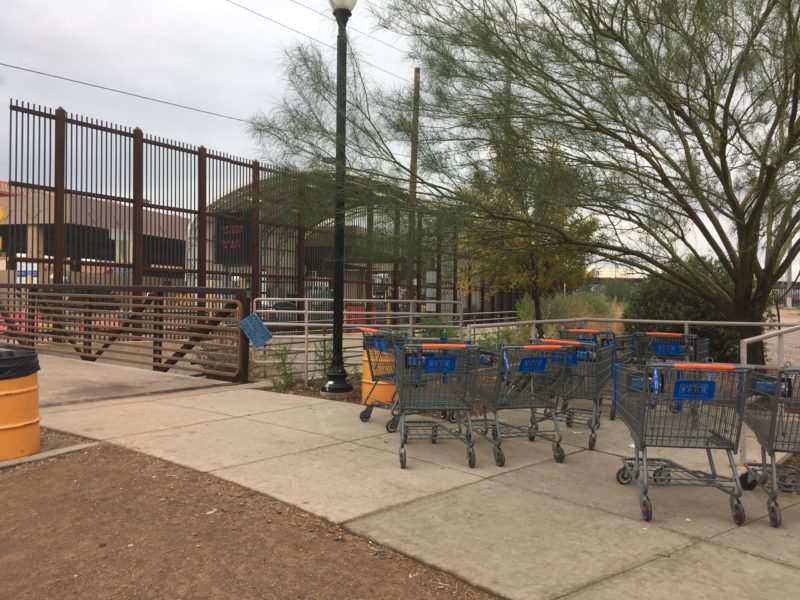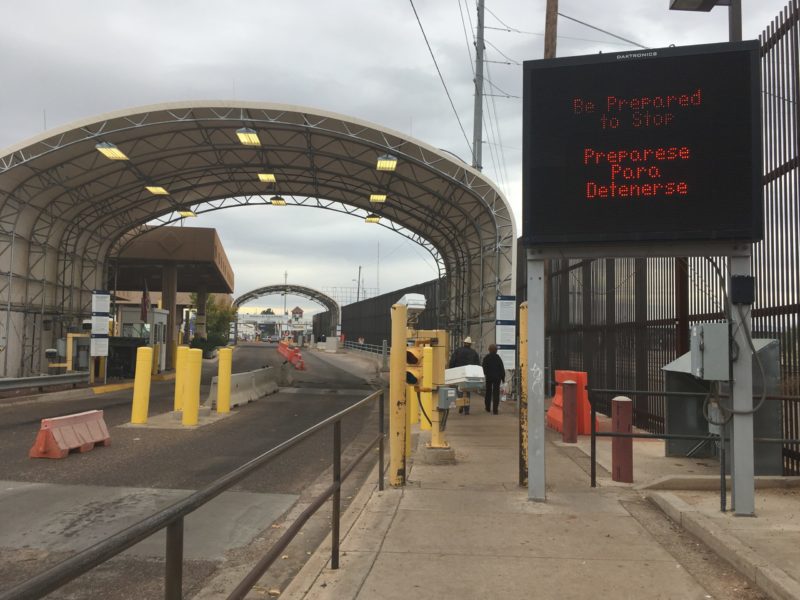“They’re Fencing Us Out”
By Emelina Rosa

HAVANA TIMES – When I turn on to Highway 80 south from Bisbee, Arizona, where I live, towards Douglas, Arizona, driving to my shift at the Migrant Resource Center, I have to wait for two army vehicles, a big beige jeep and a dark green oversized pickup truck with curtains hiding its load.
I lock eyes with the truck driver and then think, “I shouldn’t have done that, he doesn’t need to see my face.” On the road they’re going fifty miles per hour, I usually go seventy, and it takes a while to pass them. I feel a jolt of fear going around them. What if this were martial law and they could shoot me?
They must be coming from Fort Huachuca, the army post west of Bisbee, and heading down Highway 80 to Douglas with me. Five or six years ago, the state rebuilt and widened a bridge over the San Pedro River on Highway 90 between Fort Huachuca and Douglas, causing months of traffic delays.
Recently a bridge between Bisbee and Douglas was rebuilt. Some of my friends said they were widening the highway to accommodate tanks heading for the border, and I remember thinking, “That’s conspiracy nonsense, they’re paranoid, routine infrastructure maintenance is a proper function of government.” Now I think they were right, because this is the most direct route to the Mexican border from the fort.
The military has been in Douglas for years. There have been soldiers at the port of entry for years and the town is full of men in uniform. The militarization started in the 1990s, for a variety of reasons we will discuss in a future post.
One of the first casualties of this era was Esequiel Hernández, a U.S. citizen high school student who was herding his family’s goats near the West Texas border town of Redford in 1997. U.S. Marines were conducting anti-drug operations with Joint Task Force–6, charged with military anti-narcotics efforts. The boy had fired his .22 rifle, perhaps to ward off coyotes, twenty minutes before he was killed. The marine shooter and squad leader claimed Esequiel had shot at them twice, but evidence suggested otherwise.

There is new chain link fencing near the port of entry into Mexico. We usually walk across the border these days, since the wait to come back to the U.S. in a car is more than an hour. On the U.S. side, we park in a series of strip malls located a long block from the border, in a commercial district supported by Mexican shoppers and anchored by a vast Walmart where most folks are bilingual.
Between here and the border is an overgrown patch of desert scrub, near the street are bare dirt, weeds, some fast-growing Palo Verdes, a meandering concrete path, and concrete channels to contain stormwater.
Shoppers push Walmart carts full of groceries and pampers into Mexico, while people pass in both directions, pushing baby strollers, hauling luggage, and carrying floral arrangements and birthday cakes. (The last is evidence of families on both sides of the border.)
There is a handful of gringos looking for dental work and cheap pharmaceuticals, but almost everyone is Mexican, walking in a steady trickle to and from the port with its cameras, turnstiles, warning signs, and checkpoints. The actual border wall, some eighteen feet tall and made up tall steel bollards, or posts, set a few inches apart.
Recently someone began building a chain link fence around some of this area and then operating heavy equipment inside, cutting trees and heaping up piles of industrial rubble. At first I wondered if this were intended as a migrant processing center but it is an environmental remediation site, since the ground holds contamination from industrial facilities knocked down decades before. When the first posts went up, along with heaps of rolls of new chain link, I heard someone on the path say, “They’re fencing us out.”





